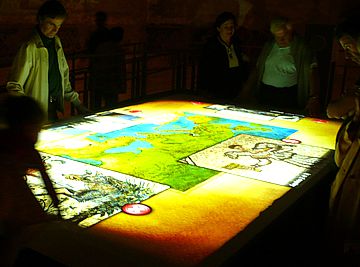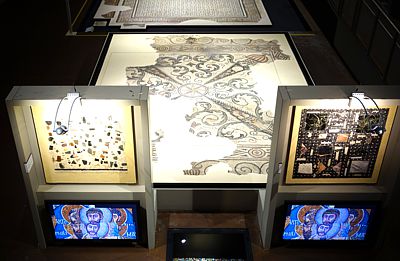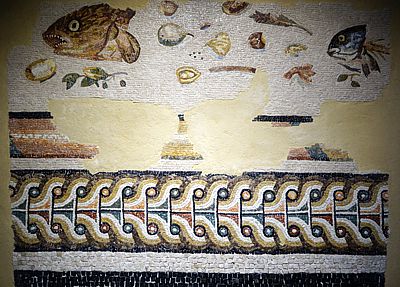TAMO “An Exciting Journey Into The Mosaic Art”
Recently it was inaugurated this interesting exhibition at the complex of St.Nicolò, Ravenna (Italy), that is approx 15 mins walking distance from the Mosaic Art School.
In this exhibition you can browse the history of mosaic, among the most famous works of this artistic technique, ranging from the first to the eighteenth century.
Ravenna is a candidate for European Capital of Culture in 2019 and it is home to a unique concentration of Christian mosaics from the fifth and sixth centuries.
The first section, “Pavimenta“, offers an educational exhibition, designed and developed by the Scuola Bottega del Mosaico. There are some copies of important antique floors, in order to see the differences of mosaic types.
 The second section, “Ecclesia, Palatium” shows a portion of the apse room, with a representation of the circus from the Palace of Ravenna, that was the first imperial residence of Honorius, then of Theodoric, and finally the Exarchs. The mosaic floor comes from the second chapel of the church of San Severo, Classe.
The second section, “Ecclesia, Palatium” shows a portion of the apse room, with a representation of the circus from the Palace of Ravenna, that was the first imperial residence of Honorius, then of Theodoric, and finally the Exarchs. The mosaic floor comes from the second chapel of the church of San Severo, Classe.
The exhibition makes extensive use of new multimedia technologies, including displays and touchscreens, allowing the visitor to discover in an interactive manner both the process of creation of the mosaic, and its geographical spread.
The itinerary is divided into six thematic routes: the light, the contexts in which the mosaics were used (the Domus, the Palatium and the Ecclesia), the tools & techniques for the mosaic, unpublished section that includes the casts from the Museums Vatican and, finally, the materials used to create the mosaic.
To better understand the mosaic technique, it is also exhibited the nineteenth-century glass paste Angelo Orsoni furnace in Venice, which operates since 1045 in Venice, and stands out in the world in the production of glass mosaic with gold leaf and Smalti glass.
The exhibition is the starting point for a visit to Ravenna to understand the history of mosaic technique and allows visitors to further appreciate the beauty of the mosaics hosted in the monuments of Ravenna.
“This exhibition is aimed to stimulate questions rather than providing answers – the curator Carlo Bertelli said.
SHARE THIS PAGE WITH A FRIEND
